Scaphoid fractures can sometimes be difficult to detect. To start with, they can be mistaken for wrist sprains, as they sometimes only cause mild pain. Besides, they can go unnoticed in the x-ray if they aren’t displaced. Keep reading to find out what they feel like and how they are managed, so you don’t avoid them.
Table of Contents
- What are scaphoid fractures?
- How to know if it’s a scaphoid fracture or a sprain
- How to treat scaphoid fractures
- Complications
What is the scaphoid?
The scaphoid is a bone in your wrist, at the base of your thumb. It’s the most frequent bone you break in your wrist, usually when you fall and land on your hand. The scaphoid is located beneath the anatomical snuffbox, between your thumb’s tendons.
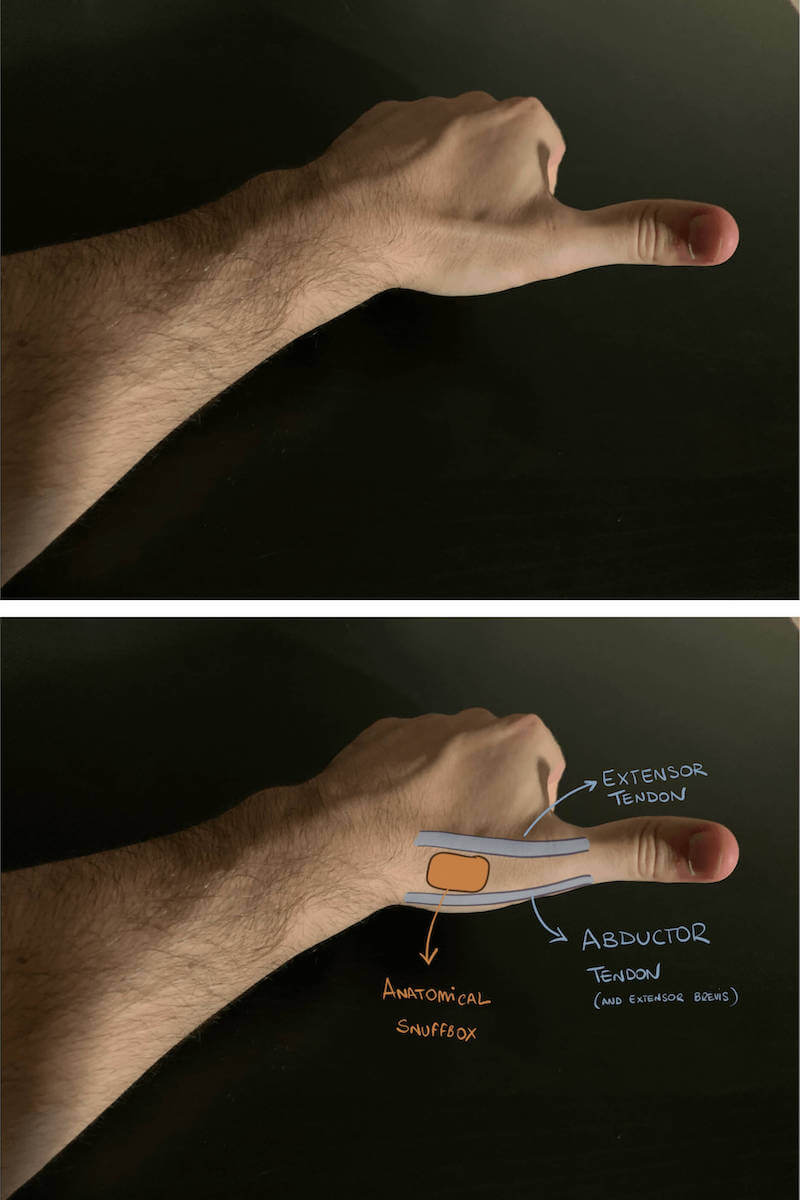
The name “snuffbox” is because, a long time ago, people used to sniff powdered tobacco from this space.
If you look at an x-ray of your wrist, the scaphoid is right after your radius. It has a proximal pole, a distal pole and a waist in between.
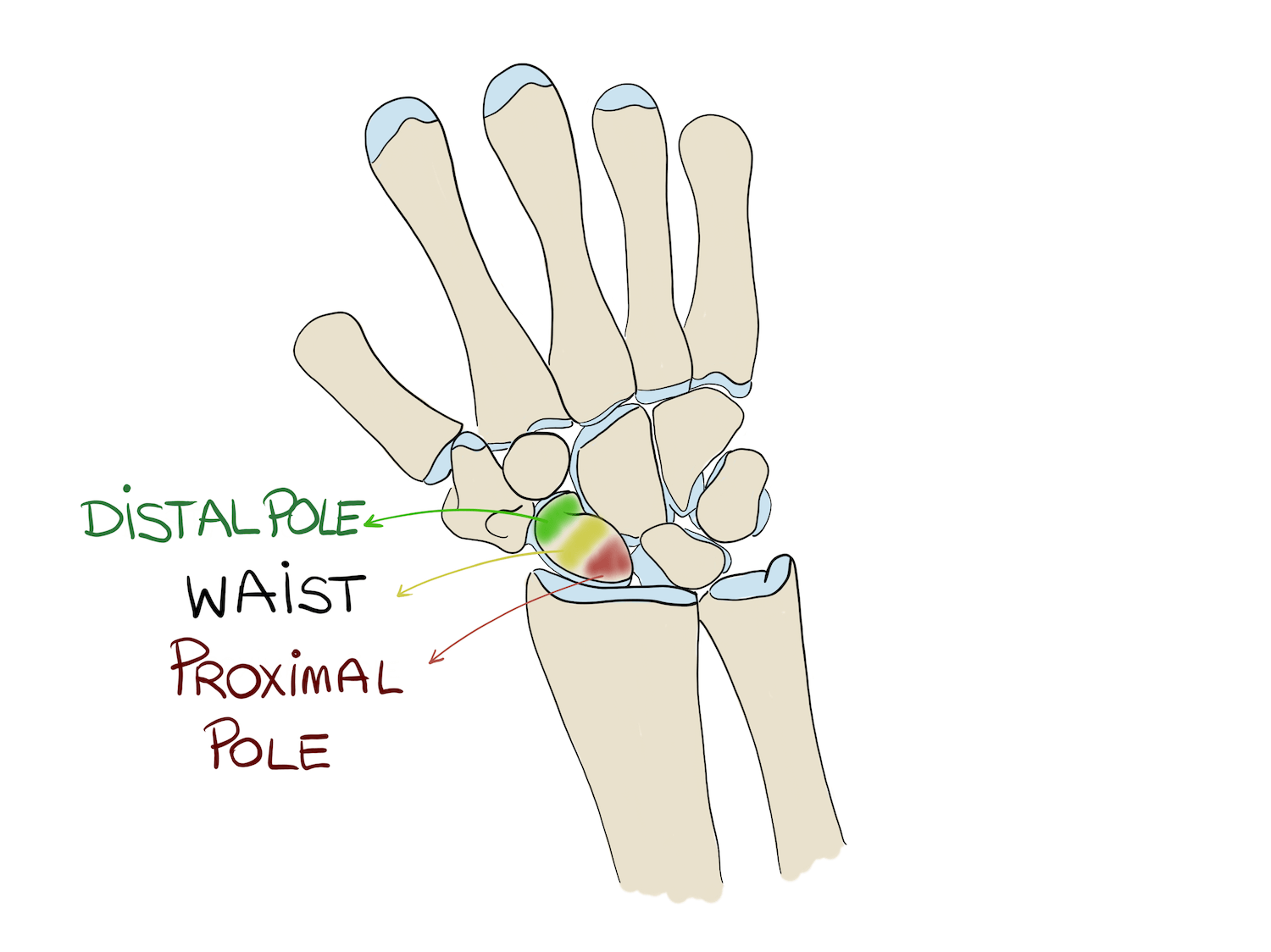
When you break your scaphoid, it’s important to know with part has broken, because the more proximal the fracture (closer to your forearm) the more tricky it is to treat, and more complications can happen.
The reason is this: the small arteries that feed the scaphoid bone enter through the far extreme and travel through the waist up back the proximal pole. If the fracture happens near the proximal pole, it’ll block all blood flow to that fragment.
And without flow, there complications can happen, like non-union and avascular necrosis.
Can a scaphoid fracture go unnoticed?
Yes, actually it’s very common that they do. That’s because during the first weeks, they are almost invisible in the x-ray. It looks like everything is fine.
After a few weeks, if the take a new x-ray, it becomes more obvious that there is a fracture.
How do you know if it’s a scaphoid fracture or a sprain?
Most of the times, it’s hard to tell without an x-ray. Small fractures can sometimes cause mild pain while you can still move your wrist. In these cases, it’s easy to mistake them for sprains.
So, if you hurt your wrist and it’s still painful after a week, go to the doctor. Your doctor will take some x-rays of your wrist. As we said, even with an x-ray, some scaphoid fractures are “invisible“ and can be difficult to detect on an x-ray.
That’s why if the x-rays are normal but the doctor still thinks you might have a scaphoid fracture, they will immobilize your wrist with a cast and repeat an x-ray after 3 weeks. After that time, the fracture is much easier to see.
So… what are the typical symptoms of a scaphoid fracture?
- Pain in your anatomical snuffbox: right between your thumb’s tendons.
- Positive “telescoping”: when they press your thumb with an axial load, it hurts (because it pushes the scaphoid).
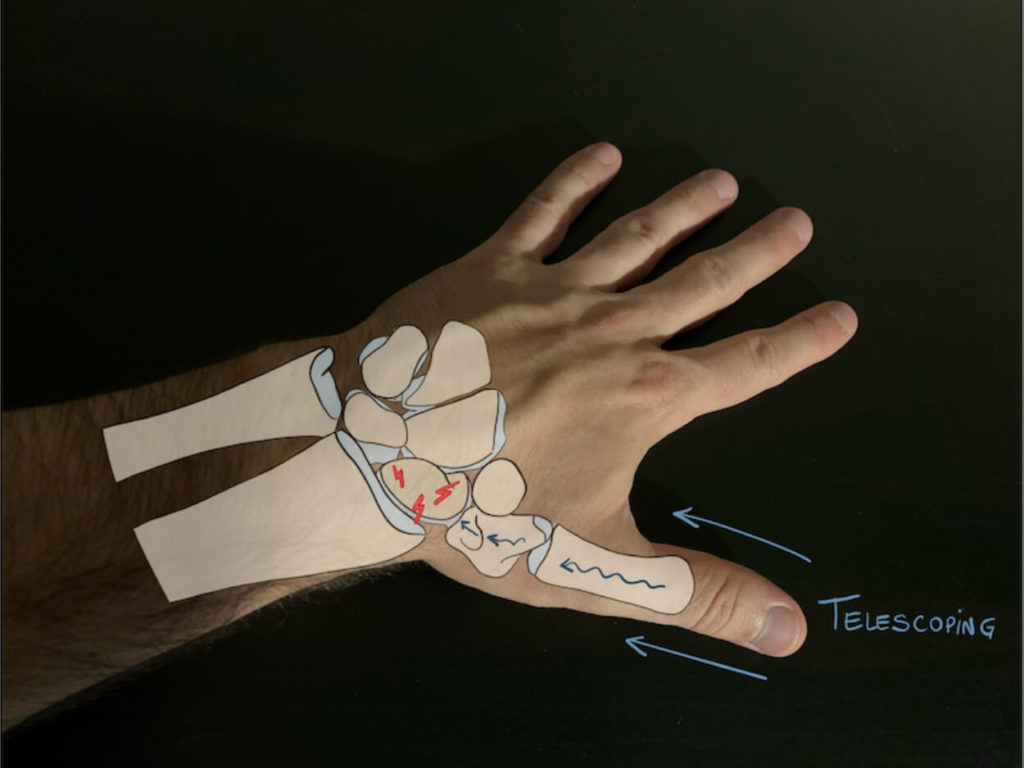
- Pain on your scaphoid tubercle: when you press on the “palm side”, at the base of the thumb.
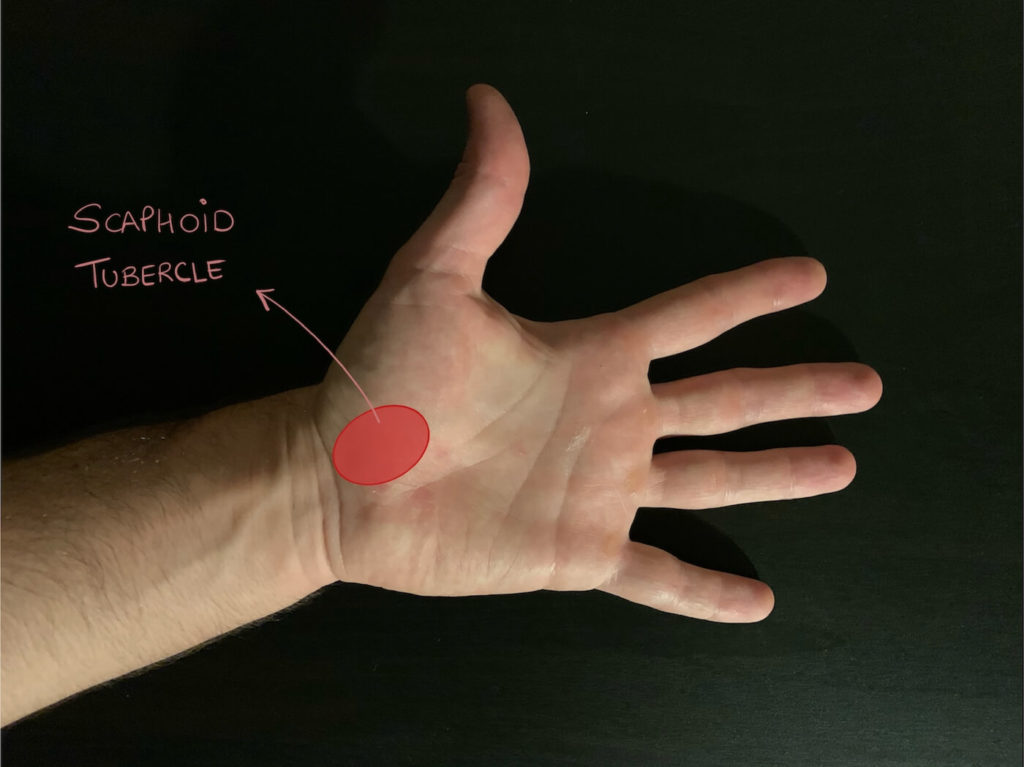
If there’s still doubts after 3 weeks, your doctor may order a C.T. or M.R.I. They are the most accurate tests to detect scaphoid fractures.
How do you treat scaphoid fractures?
Surgery
As we said, the more proximal (closer to you) the fracture, the more complex it will be. Proximal fractures have a risk for necrosis and non-union. That’s why they usually need surgery, to prevent those complications.
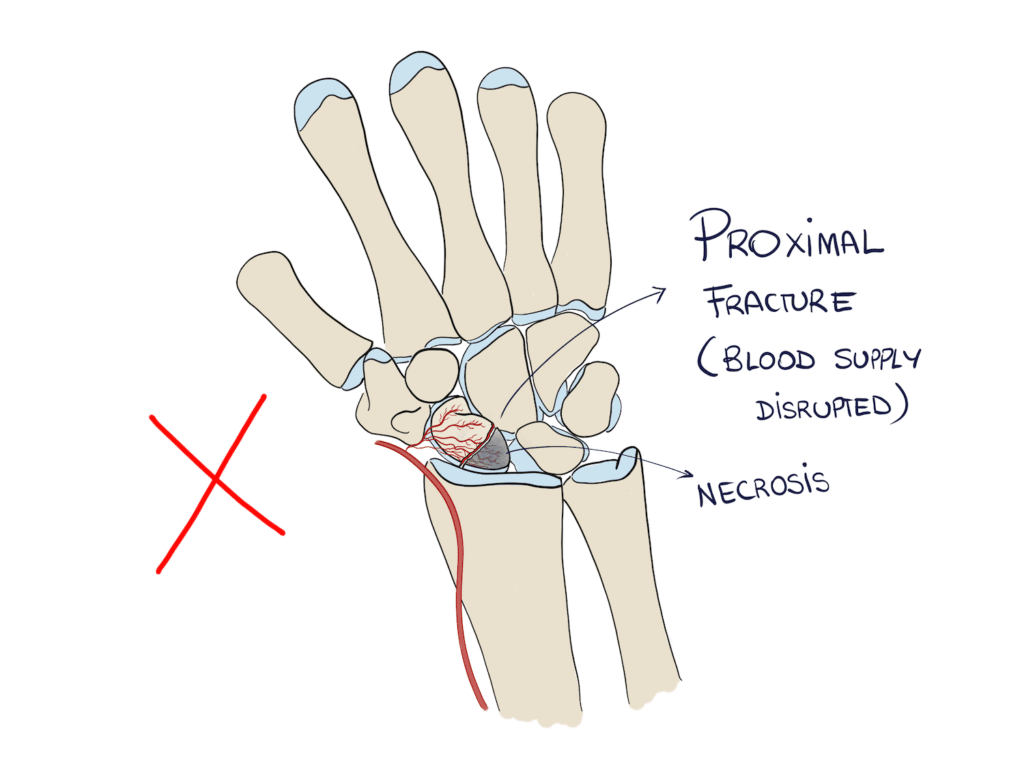
Surgery usually consists of a screw that keeps together both fragments, allowing them to heal.
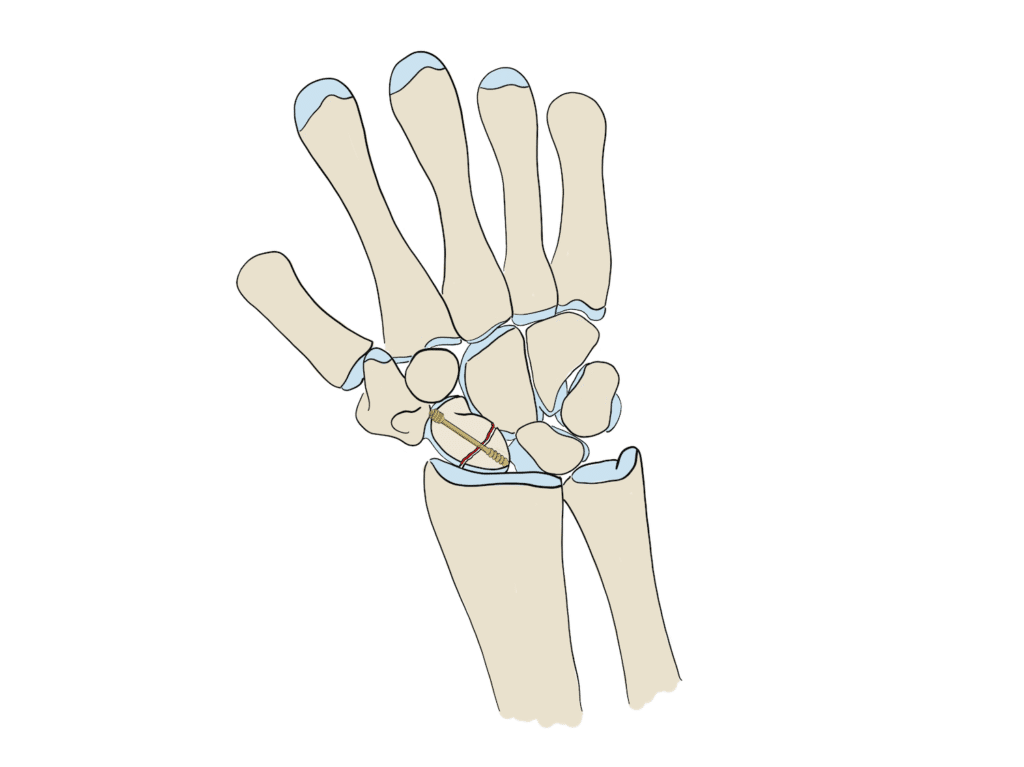
You’ll get just a small incision on the skin. Compared to conservative treatment (a cast for a long time), surgery allows you to start moving your wrist sooner, so it won’t get so stiff.
Conservative Treatment
Fractures of the distal pole, however, can be treated with a cast if they are not displaced. They just heal by themselves after some time.
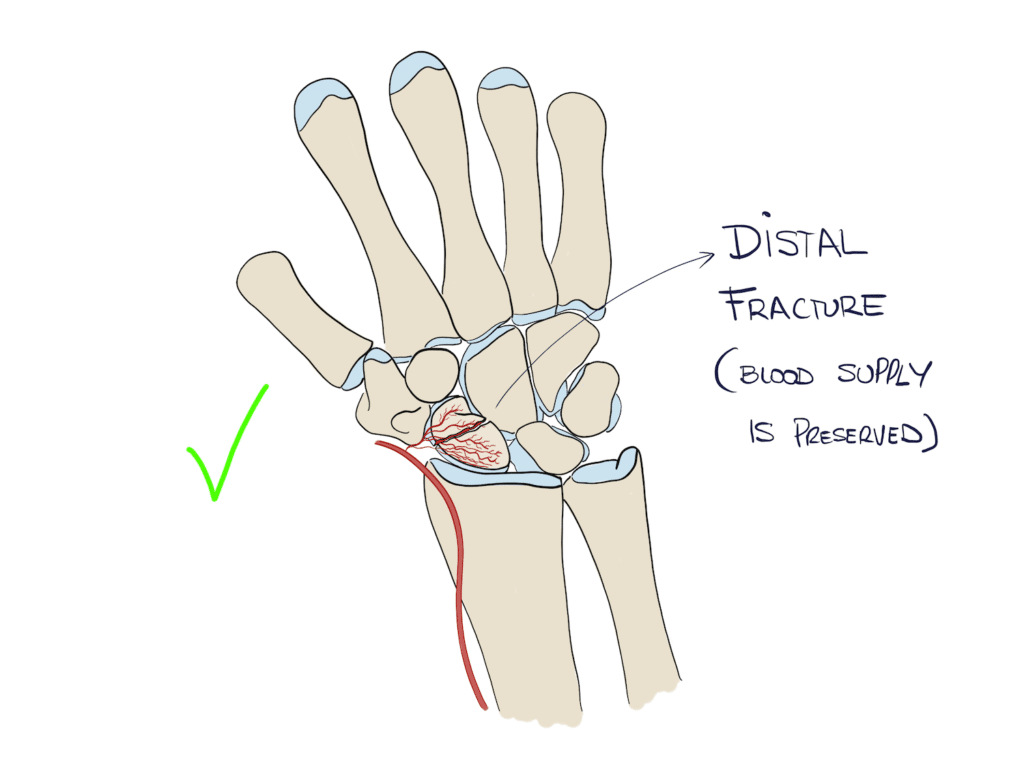
The cast should include the base of your thumb, to make sure your scaphoid is immobilized.
You’ll have to keep it that way for several weeks, even months. After that’ you’ll have to work on your wrist mobility and strength to prevent stiffness.
What happens when scaphoid fractures don’t heal right (complications)
The first complication is non-union. In order to form a callus, your bone needs enough blood supply. If it doesn’t get enough blood, your bone won’t heal. Then, the 2 fragments will remain detached. To fix a non-union, your doctor may need some bone graft. If the do, they’ll get it from your hip bone.
The other main complication is avascular necrosis. If the blood supply gets disrupted, one of the fragments can suffer necrosis. If that happens, you may need bone graft surgery, too.
Leave a Reply